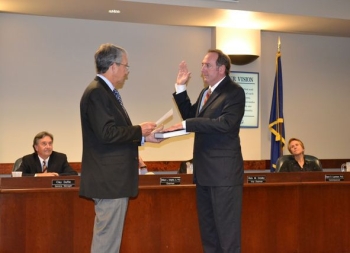Legal Update: United States Supreme Court Overturns Chevron Doctrine
In a landmark 6-3 decision issued in June 2024, the U.S. Supreme Court overturned the long-standing Chevron doctrine, fundamentally altering the landscape of administrative law. This ruling, handed down in Loper Bright Enterprises v. Raimondo, marks a significant shift in how courts will interpret agency regulations and Congressional intent.
The Chevron Doctrine: A Brief Overview
For nearly four decades, the Chevron doctrine, established in Chevron U.S.A., Inc. v. Natural Resources Defense Council, Inc., 467 U.S. 837 (1984), has been one of the most important principles in administrative law. This principle, known as “Chevron deference,” directed courts to defer to an agency’s reasonable interpretation of ambiguous statutes it administers.
The Chevron decision set forth a two-step legal test for determining when courts should defer to an agency’s interpretation:
- Determine if Congress has directly spoken to the precise question at issue.
- If not, defer to the agency’s interpretation if it is based on a permissible construction of the statute.
The Chevron deference applied when Congress had implicitly, rather than explicitly, delegated authority to an administrative agency on a particular issue. In these cases, courts were instructed not to substitute their own interpretation for a reasonable one made by the agency.
Key aspects of Chevron deference included:
- The interpretation must come from the agency charged with administering the statute in question.
- The agency’s interpretation of an ambiguous statute must be “permissible,” defined as “rational” or “reasonable.”
- The age of the administrative interpretation and Congressional action or inaction in response to it were considered in determining reasonableness.
- The agency’s interpretation could not be inconsistent with clear statutory language.
Over time, the Supreme Court refined the doctrine, limiting its application to agency interpretations reached through formal proceedings with the force of law, such as adjudications or notice-and-comment rulemaking. Interpretations in less formal formats, like opinion letters or policy statements, were given less deference.
The Loper Bright Enterprises Decision
In June 2024, the Supreme Court overturned the Chevron doctrine in Loper Bright Enterprises v. Raimondo. In a 35-page majority opinion authored by Chief Justice John Roberts, the Court held, “The Administrative Procedure Act requires courts to exercise their independent judgment in deciding whether an agency has acted within its statutory authority, and courts may not defer to an agency interpretation of the law simply because a statute is ambiguous; Chevron is overruled.”
The Court found the Chevron doctrine to be “fundamentally misguided” and inconsistent with the Administrative Procedure Act (APA). Chief Justice Roberts emphasized that the APA directs courts to “decide legal questions by applying their own judgment” and that agency interpretations of statutes are not entitled to deference.
This ruling effectively dismantles the framework that has guided courts in reviewing agency actions for decades. The Court’s decision emphasizes that the judiciary, not administrative agencies, should have the final say in interpreting statutes.
Implications for Administrative Law
The overturning of Chevron has far-reaching consequences for administrative law and regulatory practices:
- Increased Judicial Scrutiny:
Courts will now be required to more rigorously examine agency interpretations of statutes, potentially leading to more frequent invalidation of agency actions. - Reduced Agency Flexibility:
Administrative agencies may find their ability to adapt regulations to changing circumstances constrained, as they can no longer rely on judicial deference to reasonable interpretations of ambiguous statutes. - Heightened Importance of Statutory Language:
The precise wording of legislation will become even more critical, as courts will focus more intently on Congressional intent rather than deferring to agency expertise. - Potential Regulatory Uncertainty:
Existing regulations based on agency interpretations may face new legal challenges, potentially creating a period of regulatory uncertainty across various sectors. - Shift in Litigation Strategies:
Both governmental agencies and private parties will need to adjust their litigation strategies, focusing more on statutory interpretation arguments rather than the reasonableness of agency actions.
Going Forward
We will see the full impact of this decision in the coming years as lower courts begin to apply the new standard and agencies adjust their rulemaking processes. As always, lawyers should closely monitor subsequent cases interpreting and applying the new decision to fully understand its practical applications.
This shift in administrative law underscores the importance of staying informed about evolving legal doctrines and their potential impacts on client interests across various regulated industries. At Rosen Hagood, our administrative and government law attorneys work closely with municipalities, counties, special purpose districts, and other public entities in South Carolina to provide strategic legal counsel and to protect our clients’ interests.


























































































































































































